During her remarkable five decades in the industry, Vivienne Westwood accrued accolades and fashion moments worthy of the history books. The British designer redefined the way we dress more than once, earning her immense respect and global recognition, as well as a Damehood.
Below, Vogue revisits some of Westwood’s career-defining moments that helped to shape fashion.
430 Kings Road, Chelsea, 1971 to 1980
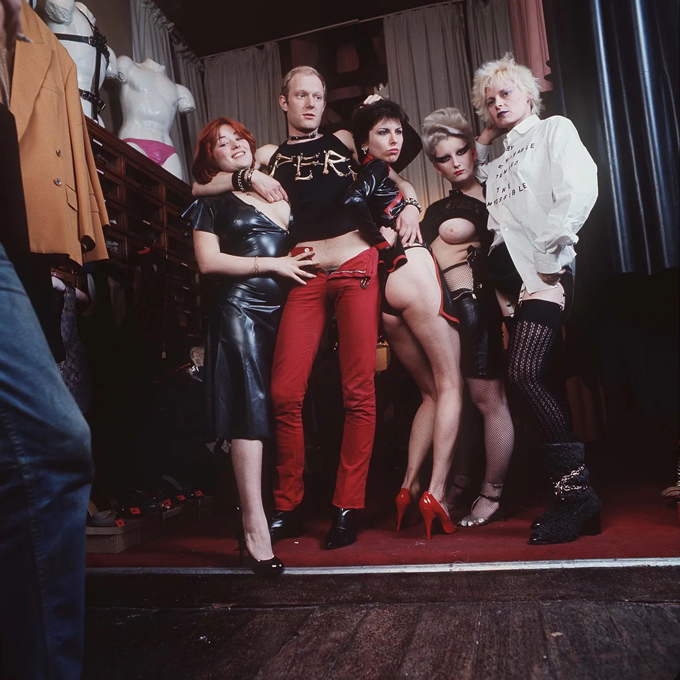
When Westwood met Malcolm McLaren, the manager of seminal punk band Sex Pistols (with whom she went on to have a child), they opened a boutique in London’s Chelsea in 1971. The 430 Kings Road store changed its name to coincide with her collection releases, from Let It Rock and Too Fast To Live, Too Young To Die, to most famously, Sex in 1974.
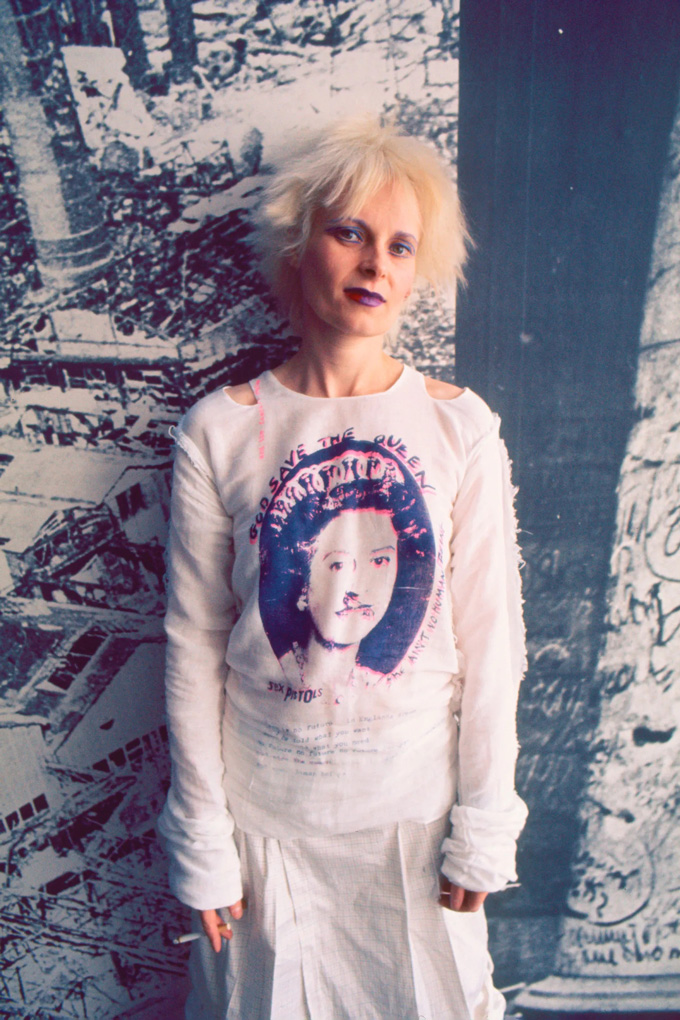
In 1977, just as Sex Pistols’s “God Save The Queen” went to number one on the NME chart, the shop was renamed Seditionaries, to reflect a new aesthetic and attitude igniting an entire movement, which became known as punk rock.
A new romantic era, 1981 to 1986

In 1981, Westwood and McLaren debuted their looks on the runway in London, where their collection, Pirates, was acclaimed for its liberation from the constricting silhouettes of the ’70s. When her work with McLaren came to an end, however, Westwood continued to dominate the fashion world.
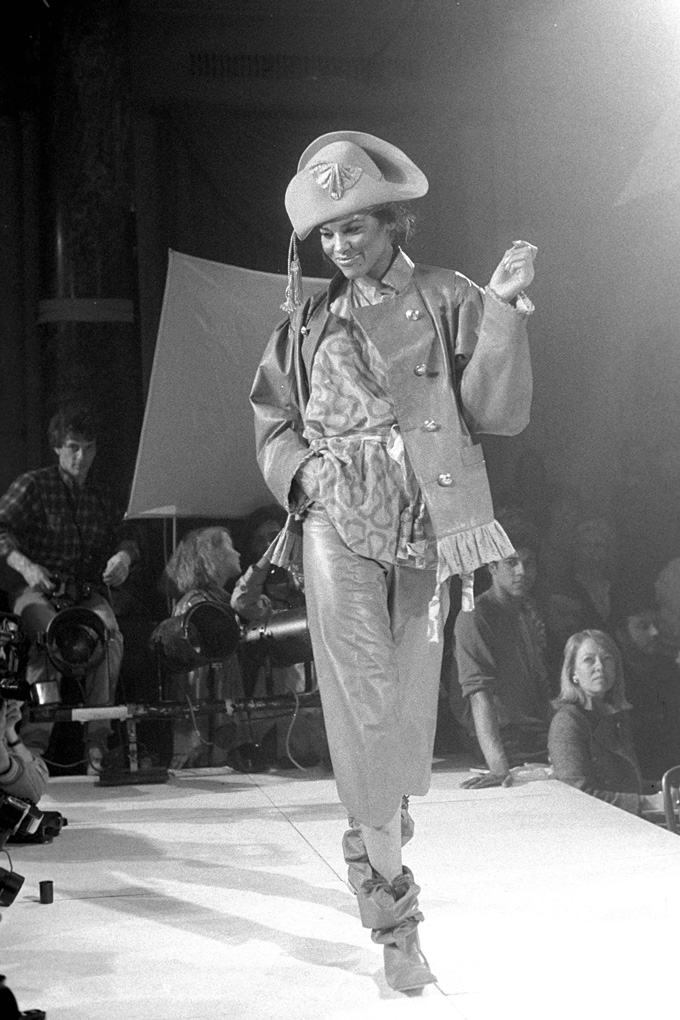
Westwood became known for taking cues from historical dress. Case in point: spring/summer 1985’s Mini-Crini collection, where instead of exploring the masculine shoulders that were rife in the ’80s, she subverted conservative 17th-century dress into sensuously fitted garments that drew attention to curves. And, of course, who could forget the iconic rocking horse shoes that were released at the same time?
The Pagan years, 1987 to 1992

A major shift from championing punk rockers to parodying the upper classes became apparent during the late ’80s, which Westwood referred to as “the Pagan years”. Her influential Harris Tweed collection of autumn/winter 1987 took inspiration from a little girl she saw on the train one day. “She couldn’t have been more than 14. She had a little plaited bun, a Harris Tweed jacket and a bag with a pair of ballet shoes in it. She looked so cool and composed, standing there,” she told The Independent in 2011.
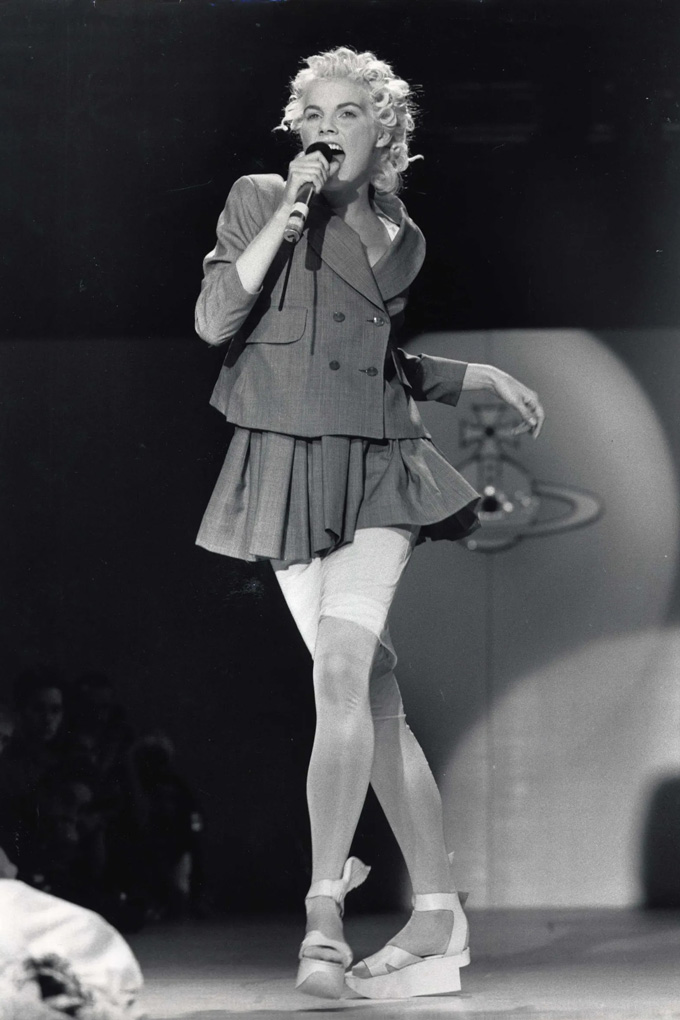
In 1992, Westwood received an OBE for services to fashion, famously wearing no underwear when accepting the honour from the Queen at Buckingham Palace.
Anglomania and the rise of the supermodels, 1993 to 1999
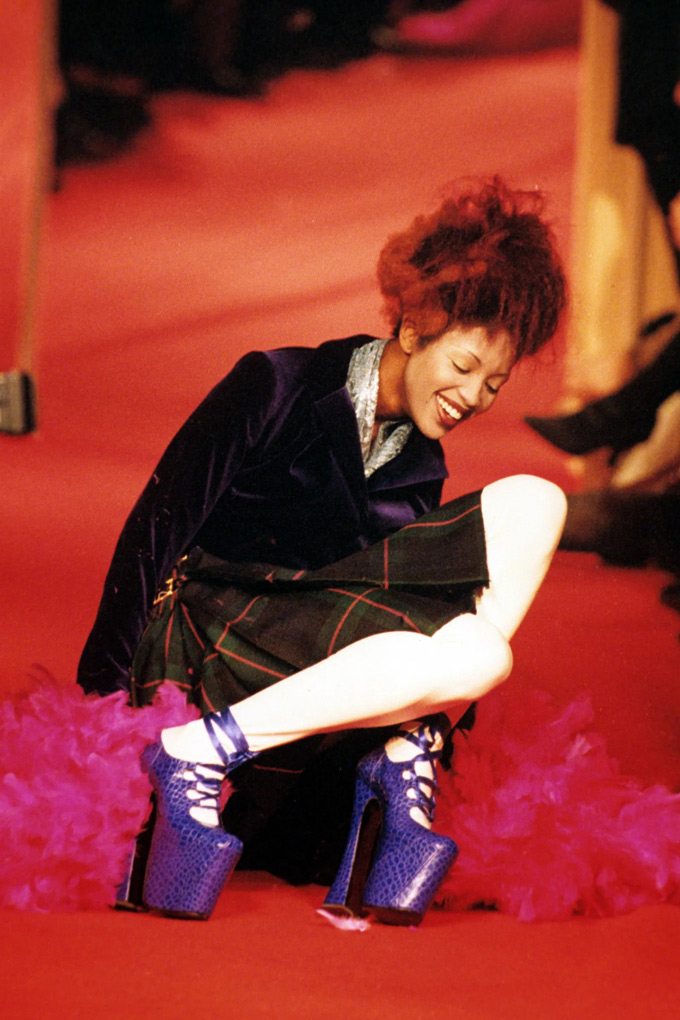
In the ’90s Westwood changed her aesthetic again, merging historical references while playing with modern proportion and precision-cut tailoring. In 1993, Westwood married Austrian design student Andreas Kronthaler and the couple formed a successful partnership in both life and work. They remained together until her death aged 81.

In terms of memorable runway moments, few compare to the time Naomi Campbell took a tumble in nine-inch platforms at Westwood’s autumn/winter 1993 show, or the corsets worn as outerwear for autumn/winter 1994. What about when Kate Moss, in full Marie Antoinette face paint, walked the runway topless eating an ice cream for the Erotic Zones spring/summer 1995 show? All pivotal fashion moments that are still referenced to this day.
Activism and androgyny, 2000 to present

Westwood began to use her collections and runway shows as a political platform in the Noughties, especially when it came to her chief causes: environmentalism and saving the planet. “Climate change, not fashion, is now my priority,” she told The Guardian in 2014. By this point, everything she released had underlying social and political messaging, from garments bearing slogans (evoking her punk days), to runway protests about Brexit, global warming and free speech.
Her collection for autumn/winter 2015, Unisex, meanwhile, was arguably one of the first to showcase androgynous looks to the mainstream, paving the way, once again, for a new era of progressive and inclusive fashion.

The mark Westwood has made on wider pop culture was evident as recently as last month, when Sarah Jessica Parker was snapped on the set of the second season of Sex and the City reboot And Just Like That, dressed in the Vivienne Westwood wedding gown she famously wore in the pages of Vogue, as well as to not quite marry Big in the first spin-off film.

Dame Vivienne Westwood’s death at the age of 81 was announced by her team on 29 December 2022. “Vivienne continued to do the things she loved up until the last moment, designing, working on her art, writing her book, and changing the world for the better,” an official statement said. “She led an amazing life.”
This article was originally published on British Vogue.





